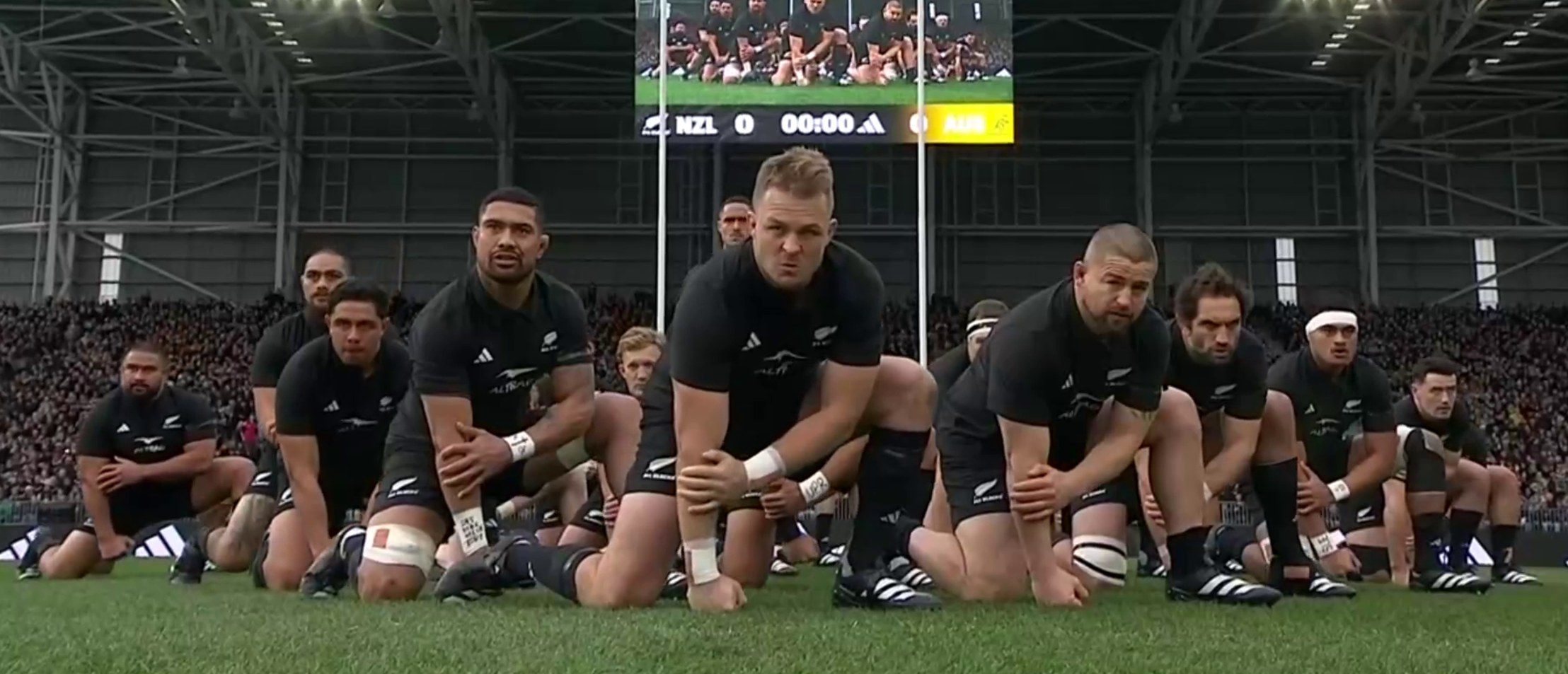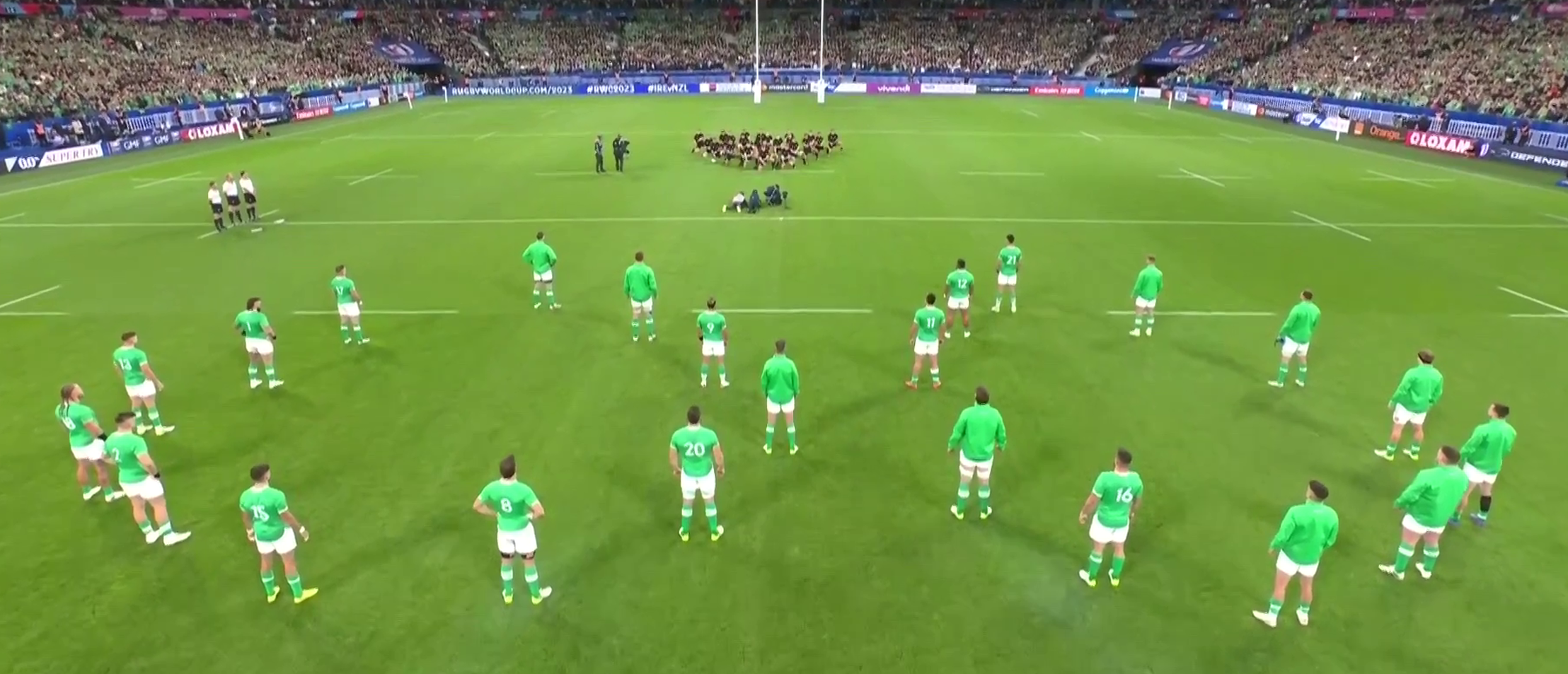
Figure 1: New Zealand perform Kapa O Pango vs Australia, 2023.
The Haka is more than just a performance; it is a powerful expression of culture, identity, and unity. Originating from the Māori people of New Zealand, the haka is a traditional war dance that combines rhythmic movements, chanting, and facial expressions to convey a message of strength, determination, and solidarity. While the haka has deep roots in Māori history, it has gained international recognition primarily through its performance by New Zealand’s national rugby teams before matches. This ritual has not only become a symbol of Rugby Union but also a representation of Māori culture on a global stage.
Two versions of the haka are used - Ka Mate and Kapa O Pango. The Māori All Blacks perform Timatanga. The Black Ferns perform Ko Uhia Mai.
Teams that Perform the Haka
The most famous exponent of the haka is undoubtedly the All Blacks of New Zealand, the national rugby union team. They perform the haka before every match, with the tradition dating back to the late 19th century. The All Blacks’ haka is now a ritual that the team performs with a sense of pride and reverence, symbolizing their strength and unity.
However, the haka is not exclusive to the All Blacks. Other New Zealand national teams, including the women’s team (the Black Ferns) and the rugby league team (the Kiwis), also perform variations of the haka. Additionally, New Zealand’s national teams in sports such as basketball and soccer have, on occasion, performed the haka, further embedding it into the country’s sporting culture.
In some instances, other Pacific Island nations have incorporated similar war dances into their pre-match rituals, such as the Siva Tau by Samoa, the Sipi Tau by Tonga, and the Cibi by Fiji. These performances, while different in origin and style, share the common purpose of invoking pride and intimidating the opposition.
Timing of the Haka in matches
Traditionally, the haka is performed before the start of a rugby match, after the national anthems of both teams have been sung. This placement before the game allows the haka to serve as a psychological challenge to the opposing team, as well as a way for the players to mentally prepare before the match begins.
Historically, the timing of the haka has varied. In the early days of its performance, it was sometimes done after the match as a form of celebration. However, as the haka became more formalized as part of the pre-match ritual, it found its place before the kick-off. The timing has been subject to some debate and modification over the years, with different teams and event organizers experimenting with when it should be performed. Today, the pre-match haka has become a standard, anticipated moment, adding to the spectacle and excitement of the game.
Why Are Teams Allowed to Perform the Haka?
The permission for New Zealand teams to perform the haka before matches is rooted in respect for cultural traditions and the significance of the haka to the Māori people and New Zealand as a whole. The haka is more than just a dance; it is a spiritual and cultural practice that carries with it the mana (power and authority) of the people performing it. For the All Blacks and other New Zealand teams, performing the haka is a way to honour their heritage, connect with their ancestors, and showcase their collective resolve.
While the haka is widely respected, its performance has not been without controversy. Some critics argue that it gives New Zealand teams an unfair psychological advantage, as the haka is a powerful and intimidating display. Others question why other teams are expected to stand still and respect the haka without responding, potentially putting them at a psychological disadvantage before the game even begins.
Despite these criticisms, the haka remains a unique part of international rugby, with governing bodies like World Rugby acknowledging its cultural significance and allowing its continued performance. This respect for cultural practices extends to other teams’ war dances as well, ensuring that these expressions of identity and tradition are preserved on the global stage.
Can Other Teams Respond to the Haka?

Figure 2: Ireland form a figure 8 in response to the haka, RWC Quarter Final 2023.
While opposing teams are generally expected to stand respectfully during the haka, there have been instances where teams have chosen to respond in their own way. The rules and etiquette surrounding responses to the haka vary, and any response is usually a calculated decision by the opposing team to meet the psychological challenge posed by the haka. As of 2024, the only strict rules for cultural challenges are that teams can not cross their own 10m line. Otherwise, teams may freely respond how they wish.
One of the most famous responses to the haka came from the French rugby team in the 2007 Rugby World Cup, where they advanced towards the All Blacks in a V-formation, directly challenging the haka. This was seen as a way to counteract the psychological impact of the haka and to assert their own strength and unity. France went on to win the match 20-18. On the other hand, occasionally opponents have ignored, or also challenged the haka, which seems to have galvanised the team, leading to huge wins for New Zealand.
However, responses to the haka can be controversial. In some cases, they are seen as disrespectful if they are perceived as mocking or diminishing the cultural significance of the haka. Teams that choose to respond must do so with an understanding of the cultural weight of the haka, ensuring that their actions are respectful rather than confrontational.
Cultural Meaning of the Haka
The haka is deeply embedded in Māori culture, where it was traditionally performed in contexts including to welcome guests, celebrate achievements, and prepare warriors for battle. The haka’s origins are linked to the legend of Te Rauparaha, a chief who composed the famous “Ka Mate” haka as a celebration of life and triumph over death. This particular haka, with its chant “Ka mate, ka mate! Ka ora! Ka ora!” (“It is death! It is life!”), is a powerful expression of survival and resilience.
In a broader cultural context, the haka symbolizes the specific culture of the group performing it. The synchronized movements and chanting create a sense of cohesion and shared purpose, making the haka a powerful tool for bringing people together. The haka also serves as a way to pass down cultural knowledge and traditions from one generation to the next, preserving the Māori identity in a modern era.
Modern interpretations of the haka have expanded its significance beyond its traditional roots. Today, the haka is performed not only in sports but also at weddings, funerals, and other significant events, both in New Zealand and internationally. Its adaptability has made it a symbol of cultural pride and resilience, resonating with people far beyond New Zealand’s shores.
Māori leaders and cultural experts emphasize the importance of understanding and respecting the haka’s cultural origins and meanings. They advocate for the haka to be performed with integrity and awareness, ensuring that its cultural significance is not diluted as it becomes more widely recognized around the world.
Conclusion
The haka stands as a powerful symbol of cultural identity, strength, and unity. Its performance by New Zealand teams, particularly the All Blacks, has brought the haka to international attention, making it one of the most recognisable pre-match rituals in sports. While its performance is sometimes controversial, the haka’s cultural significance and the respect it commands continue to ensure its place in the world of sports and beyond. Understanding the haka’s origins and meanings is crucial for appreciating its role not just as a pre-game spectacle but as a profound expression of a living culture.
External Links
- Haka in Sports
- Ka Mate + translation
- Kapa o Pango vs South Africa
- Timatanga vs Ireland
- Information and Translation